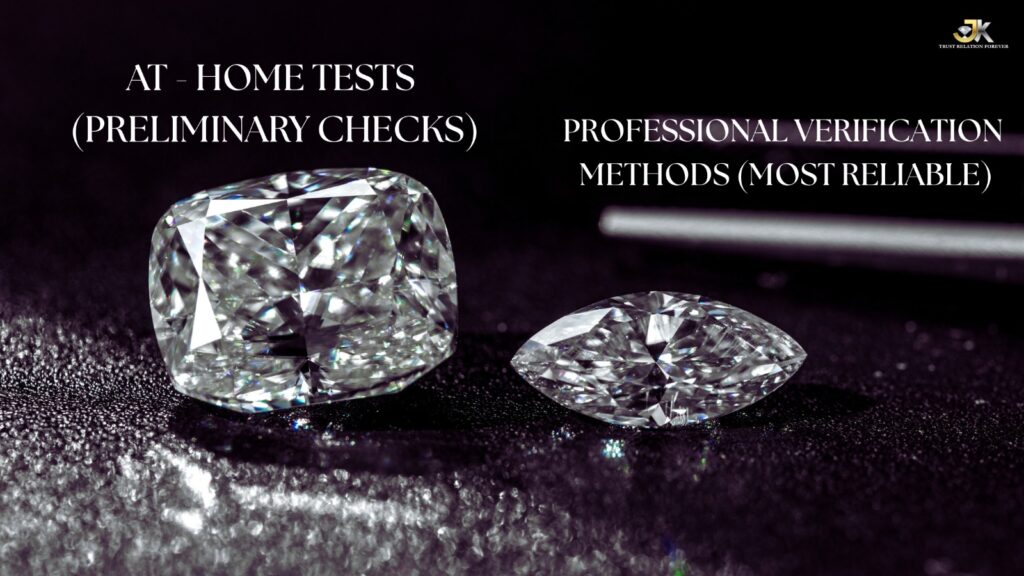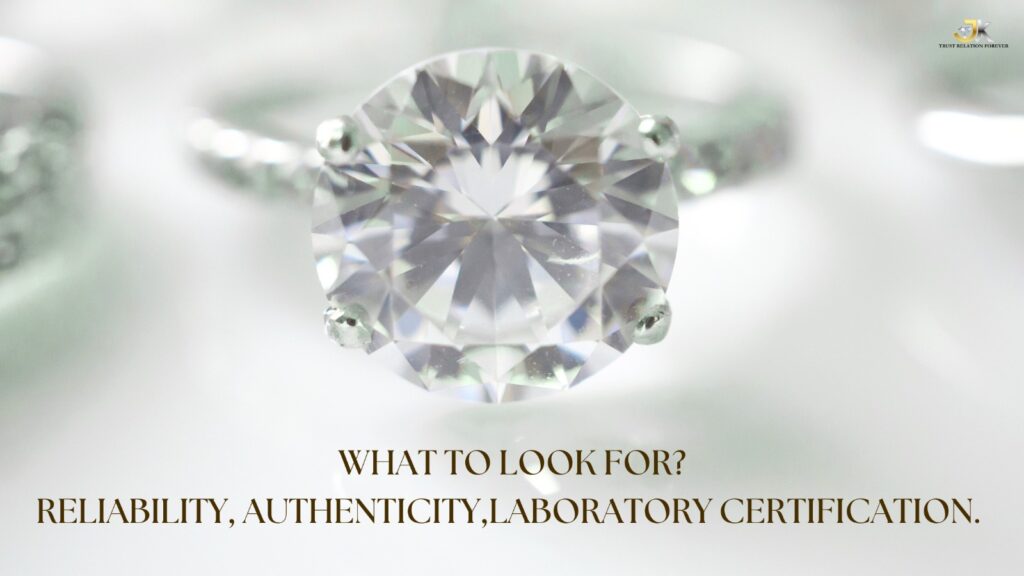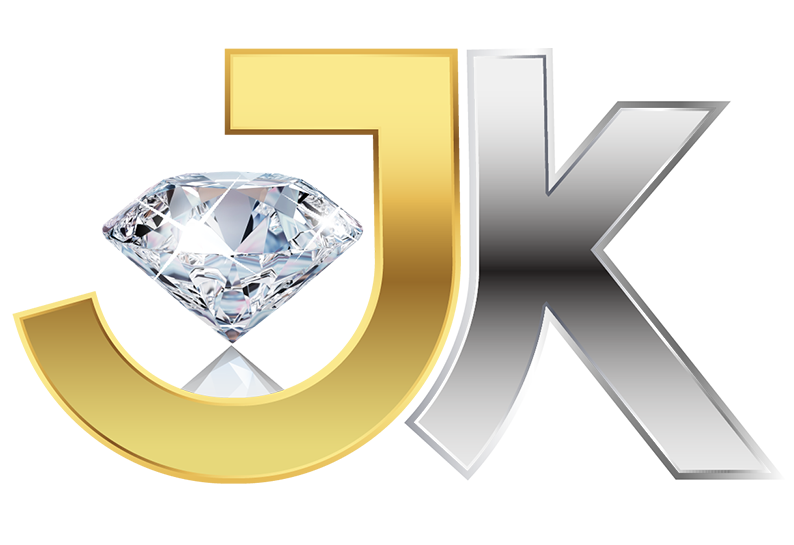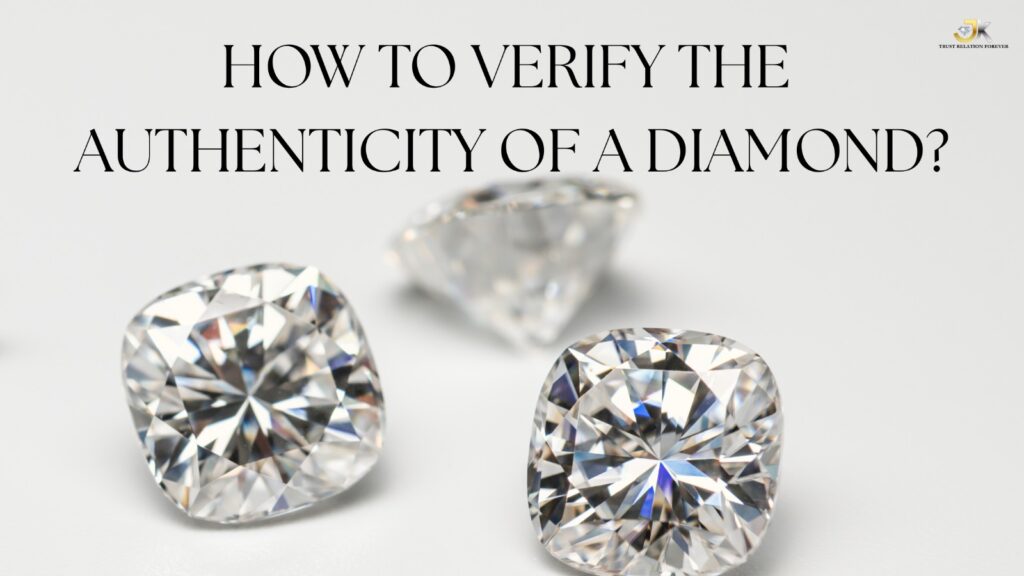Verifying the authenticity of a diamond is crucial, whether you’re buying a new piece, examining an inherited gem, or simply curious. While some at-home tests can offer preliminary clues, a professional evaluation by a certified gemologist remains the most reliable method.
Here’s a comprehensive guide on how to verify the authenticity of a diamond:
At-Home Tests (Preliminary Checks)
These tests are easy to perform and can help you rule out obvious fakes, but they are not foolproof.
- The Fog Test / Breath Test:
- Hold the diamond between two fingers and breathe on it, as if fogging up a mirror.
- Real diamond: The fog will dissipate almost immediately (within 1-2 seconds) because diamonds are excellent heat conductors.
- Fake diamond: The fog will linger for several seconds due to lower thermal conductivity.
- Caution: Ensure the diamond is clean and free of oils, as this can affect the results.

- The Water Test (for loose diamonds):
- Fill a glass with water and gently drop the loose diamond into it.
- Real diamond: Due to its high density, a genuine diamond will sink to the bottom.
- Fake diamond: Many imitations (like glass or plastic) will float or hover in the water.
- Caution: This test is only reliable for loose diamonds. If the diamond is set in jewelry, the weight of the metal will cause it to sink regardless of authenticity. Also, some fake diamonds, like certain types of cubic zirconia, can also sink.
- The Dot Test / Read-Through Test (for loose diamonds):
- Place a piece of white paper on a flat surface and draw a small dot or a line of text on it.
- Place the loose diamond flat side down directly over the dot/text.
- Look down through the pointed end of the diamond.
- Real diamond: You will not be able to see the dot clearly or read the text. The diamond’s high refractive index will bend and scatter the light so effectively that the dot or text will be obscured.
- Fake diamond: You will likely see the dot clearly or be able to read the text, as many imitations do not refract light in the same complex way.
- The Sparkle Test:
- Hold the diamond under a normal lamp.
- Real diamond: A genuine diamond will exhibit exceptional brilliance (white light reflections, often described as “sparkle”) and fire (flashes of rainbow colors). The white light reflections will be strong, and the colored flashes will be subtle but present.
- Fake diamond: Imitations often sparkle less intensely, or they might display an excessive amount of rainbow colors (too much “fire”) without the strong white brilliance of a real diamond.
- Check the Setting and Mount:
- Real diamonds: Are almost always set in high-quality metals like gold (10K, 14K, 18K, with hallmarks like “10K,” “14K,” “18K,” “585,” “750”) or platinum (“PT,” “Plat,” “950”).
- Fake diamonds: Are less likely to be set in expensive metals. Look for stamps like “CZ” (cubic zirconia) or other indications of cheaper materials.
- Magnifying Glass / Loupe Test:
- Use a jeweler’s loupe (10x magnification) or a good magnifying glass.
- Real diamond: Most natural diamonds will have some naturally occurring imperfections called “inclusions” (internal flaws) or “blemishes” (surface flaws). These can look like tiny crystals, feathers, or clouds. The edges of the facets will also appear sharp.
- Fake diamond: Many imitations, especially cubic zirconia, will appear “too perfect” and flawless. Their facet edges might also look more rounded. (Note: Flawless natural diamonds exist but are extremely rare and expensive).
- Scratch Test (Use with Extreme Caution):
- Diamonds are the hardest known natural material (10 on the Mohs scale).
- Real diamond: Should be able to scratch glass or even sandpaper without getting scratched itself.
- Fake diamond: Will likely show scratches if rubbed against sandpaper or another hard object.
- Caution: This test is highly discouraged as it can damage the stone if it’s not a diamond, and even a real diamond with internal flaws could potentially chip under pressure. It’s better to rely on non-damaging tests.

Professional Verification Methods (Most Reliable)
For definitive authentication, always consult a certified gemologist or a reputable jeweler. They use specialized equipment and expertise.
- Diamond Tester (Thermal Conductivity Tester):
- These handheld devices measure how quickly heat passes through a gemstone.
- Real diamond: Will instantly disperse heat due to its superior thermal conductivity, resulting in a positive reading.
- Fake diamond: Most simulants (like cubic zirconia) are poor heat conductors and will give a negative reading.
- Note: Some advanced simulants, like moissanite, have similar thermal conductivity to diamonds and may fool a basic thermal tester.
- Moissanite Tester (Electrical Conductivity Tester):
- This specialized tester distinguishes diamonds from moissanite by measuring electrical conductivity.
- Real diamond: Weakly conducts electricity.
- Moissanite: Conducts electricity more strongly than a diamond.
- Combined Testers: Many modern diamond testers are “multi-testers” that combine both thermal and electrical conductivity tests to differentiate between diamonds, moissanite, and other simulants.
- UV Light Test / Black Light Test:
- When exposed to ultraviolet (UV) light, some diamonds exhibit a phenomenon called fluorescence, usually glowing blue.
- Real diamond: May show a blue glow (though not all natural diamonds fluoresce, and some may fluoresce other colors like yellow or green).
- Fake diamond: Often shows no reaction or a different color glow.
- Caution: This test is not conclusive on its own, as lack of fluorescence doesn’t mean a diamond is fake, and some fakes can be treated to mimic fluorescence.
- Professional Gemological Laboratory Certification:
- This is the most authoritative way to verify a diamond’s authenticity and characteristics.
- Reputable labs like the Gemological Institute of America (GIA), International Gemological Institute (IGI), and American Gem Society (AGS) provide detailed grading reports (certificates).
- These reports assess the diamond’s “4Cs” (Carat weight, Cut, Color, Clarity) and confirm its natural or lab-grown origin.
- Many certified diamonds also have a unique laser inscription on their girdle (the outer edge) that matches the certificate number, which can be verified online with the issuing lab.
- X-ray Imaging:
- Professional gemologists may use X-ray machines to determine the stone’s crystalline structure. Diamonds have a radiolucent (transparent to X-rays) structure, unlike many simulants.
Stay updated on the latest JK Sons postings by following us on Instagram.
https://www.instagram.com/j_ksons/
https://x.com/jksonsdiamond?t=a4_K1Uej1BwNCXt63jmEMw&s=08
https://www.youtube.com/@JKSons-q4x
https://www.facebook.com/share/19fYjZtEZf/
https://www.linkedin.com/in/jk-sons-a8005832b?utm_source=share&utm_campaign=share_via&utm_content=profile&utm_medium=android_app


